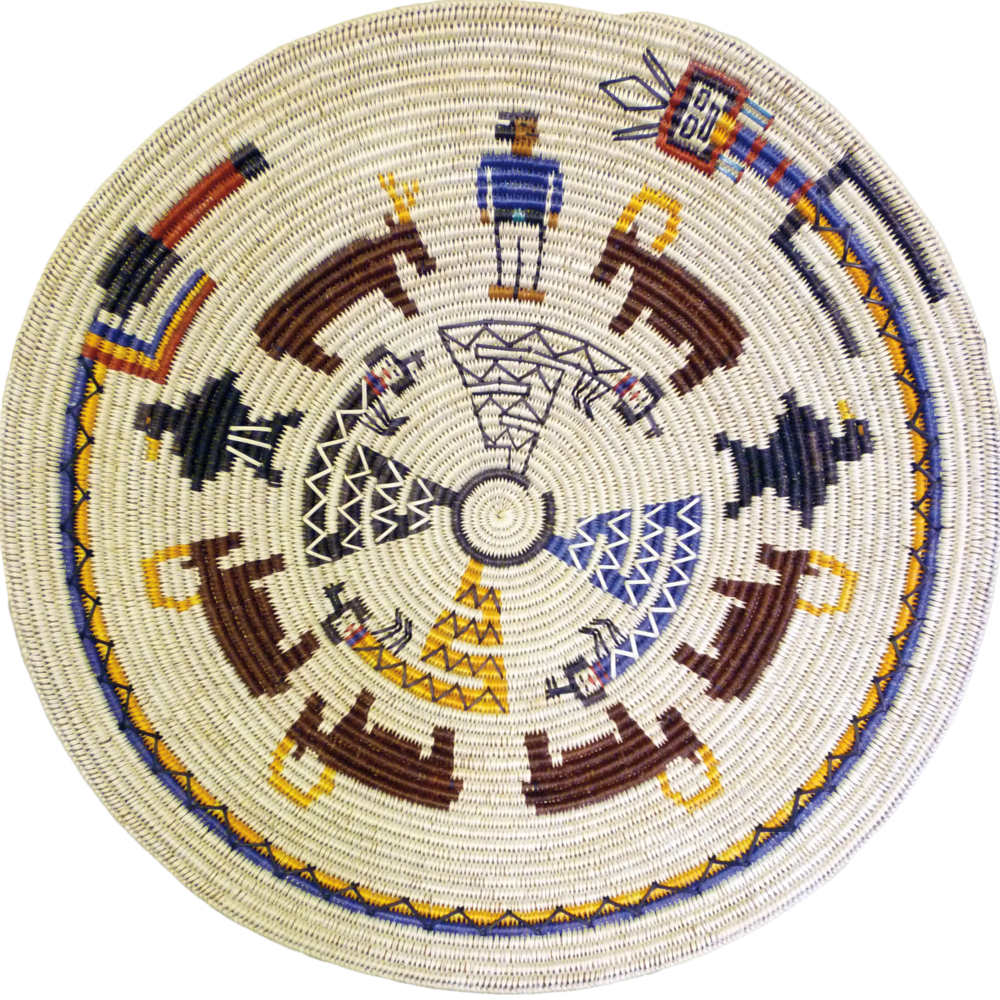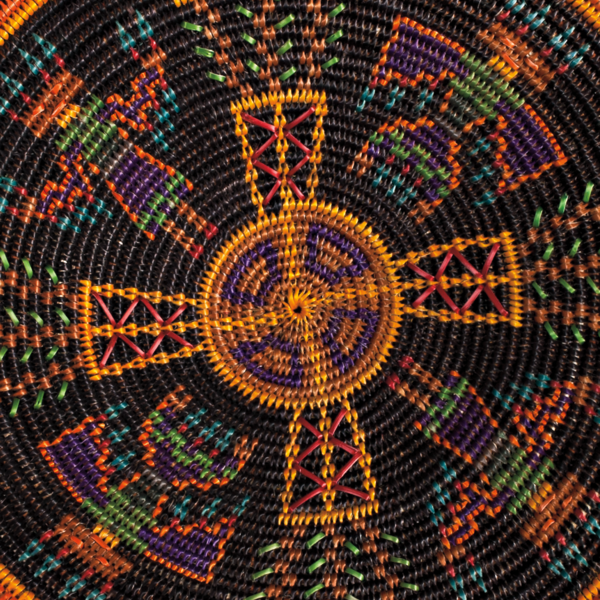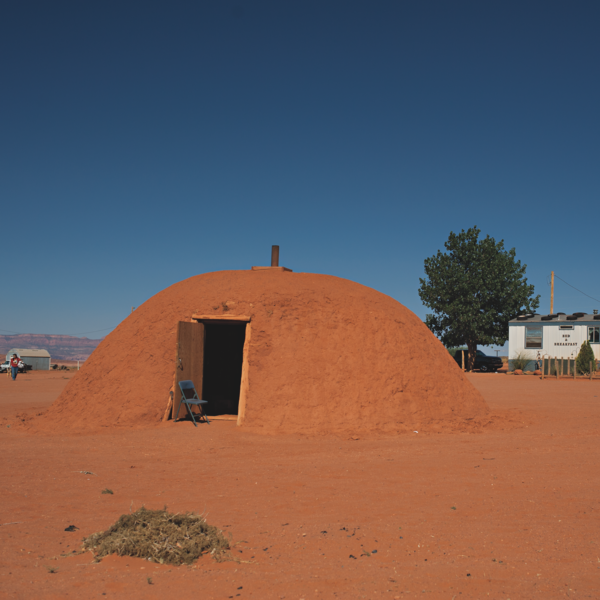Night Chant Origin
Long ago, the middle of three brothers was called Bił Áhát’íní (The Visionary) because he often traveled far, following things he saw or heard, and returned with new knowledge. One day, the Visionary came upon four mountain sheep. As he tried four times to kill them, they transformed into gods. The gods invited the Visionary to join them on their journey and changed him into a mountain sheep, too. When they reached a large hogan, many Diyin Dine’é (Holy People) were gathered there. As the days of the chant progressed, some of the Holy People unfolded paintings on deerskins that looked like the sand paintings of the Diné (Navajo) today. The Visionary paid close attention to the songs, prayers, paintings, dance movements, and sacred apparatus. The Holy People permitted the Visionary to share the Tł’ééjí Hatáál (Night Chant) with his younger brother to heal those afflicted with illness. He in turn taught this nine-day ceremony to the Diné.





